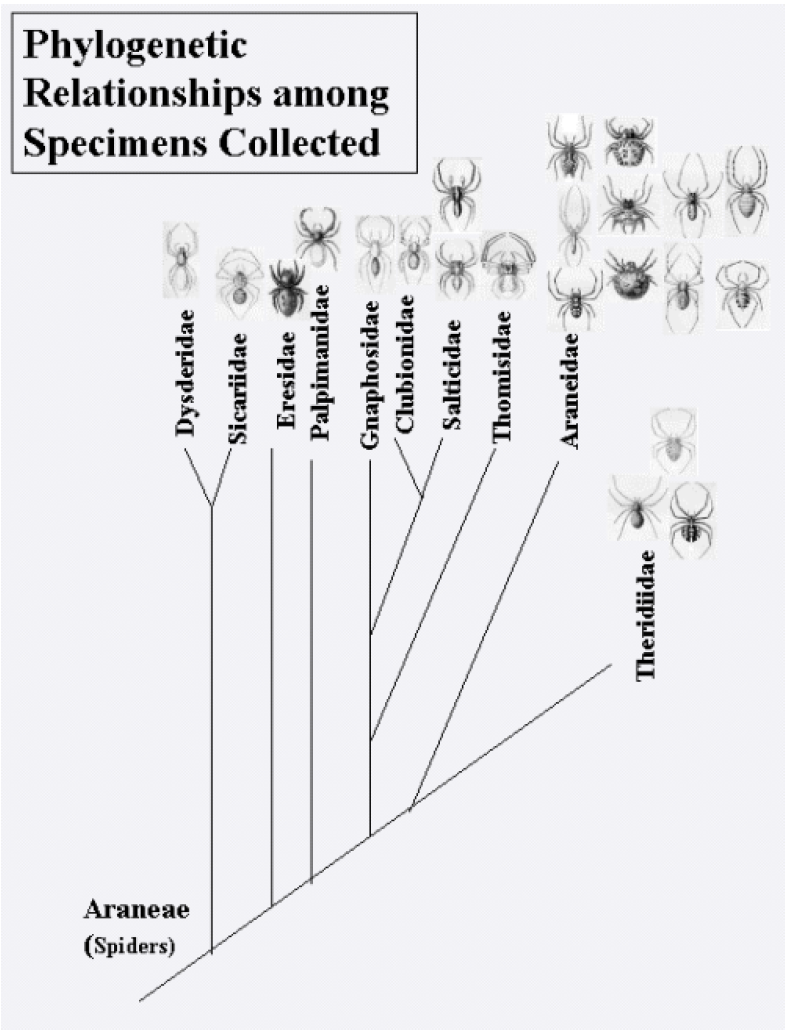5.5: Level 3: Considering evolutionary distinctiveness
- Page ID
- 17376
When contrasting patterns of species diversity and community distinctiveness, we typically treat each species as equally important, yet are they? What if a species-poor area actually is quite evolutionarily distinct from others? Similarly, what if your most species-rich site is comprised of a swarm of species that have only recently diverged from one another and are quite similar to species present at another site? These questions allude to issues of biological diversity at higher taxonomic levels. Only by looking at the underlying evolutionary relationships among species can we gain this additional perspective. We have provided in Figure \(\PageIndex{1}\) a phylogeny of the spider families that occur in your collections (a genuine phylogeny for these families based in large part on Coddington and Levi 1991). In brief, the more closely related families (and species therein) are located on more proximal branches within the phylogeny. Based on the evolutionary relationships among these families, will you modify any of the conclusions you made on prioritizing forest patches for protection based on patterns of species diversity alone? If so, why?

Figure \(\PageIndex{1}\)


